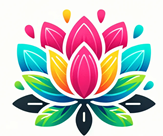India has emerged as a major hub for apparel sourcing and manufacturing over the past few decades. With its abundant raw materials, skilled workforce, and low labor costs, India offers attractive benefits for brands and retailers looking to source competitively priced garments.
| # | Important Information |
|---|---|
| 1 | India has a large, low-cost skilled workforce and expertise in apparel manufacturing |
| 2 | Abundant raw material availability gives India a competitive advantage |
| 3 | India can produce a wide range of garment styles from casual to formal wear |
| 4 | Sourcing agents help connect overseas buyers to the right Indian factories |
| 5 | Careful vetting of agents on experience, networks, and services is crucial |
Overview of India’s Textile and Apparel Industry
The textile and apparel industry is one of the oldest and largest sectors in the Indian economy. India has a long history and tradition of textile production dating back thousands of years.
Some key facts about the Indian textile industry:
- Provides direct employment to over 35 million people, making it one of the largest employers in the country
- Contributes approximately 7% to India’s GDP and 15% to total export earnings
- Largest producer of cotton and second largest producer of silk and jute in the world
- Among the top 3 global producers for several segments like cotton yarn, spun yarn, viscose staple fiber
The apparel manufacturing industry has also grown tremendously over the past two decades. India is now:
- The second largest exporter of textiles and apparel after China
- The fourth largest producer of synthetic fibers and yarns globally
- A major exporter of cotton yarns, fabrics, and readymade garments
Key Takeaways
India has a massive textile and apparel industry that is a major contributor to exports and GDP
It enjoys competitive advantages in raw materials, workforce and manufacturing expertise
India is among the top global producers in several textile and apparel categories|
Several factors have fueled the growth of India’s textile and apparel industry:
- Abundant availability of raw materials like cotton, silk, jute and wool
- Large and low cost skilled workforce
- Established manufacturing base and expertise
- Government policies supporting modernization and growth
- Vertical integration across the supply chain

Benefits of Sourcing Apparel from India
India offers several unique advantages that make it an attractive destination for apparel sourcing:
Skilled Workforce
- India has a large pool of skilled and experienced workers in garment manufacturing
- Availability of technically trained supervisors and workers
- Strong expertise in niche crafts like embroidery, embellishments, etc.
- English speaking workforce enables easier communication
Low Labor Costs
- Wage rates in India are among the lowest globally
- Minimum wages range from $100 to $150 per month
- Results in significant cost savings on labor-intensive apparel
Vast Raw Material Resources
- India has abundant availability of raw materials like cotton, wool, silk
- Third largest producer of cotton globally after China and the US
- Raw material sourcing close to production centers cuts lead times
Key Takeaways
Skilled workforce with low labor costs
Expertise in niche crafts and embellishments
Abundant raw material availability|
Here are some tips on negotiation strategies in India to get the best pricing and terms when sourcing apparel.
Types of Garments Commonly Sourced from India
India has the capability to produce almost any type of garment. Some categories of apparel commonly sourced include:
Casual Wear
T-shirts, tops, dresses, skirts, shorts, pants, jackets, etc.
Key benefits:
- Expertise in cotton and knitwear garments
- Large production capacities
- Competitive pricing
Formal Wear
Suits, blazers, trousers, shirts, ties, business wear
Key benefits:
- Strong capabilities in structured garments
- Availability of fine fabrics like wool, linen, silk
- Attention to details like stitching, construction
Intimates and Activewear
Undergarments, lingerie, sports bras, athleisure wear, swimwear
Key benefits:
- Sophisticated production technologies
- Use of specialized fabrics and elastics
- Intricate design capabilities
|Key Takeaways| |-|-| |Broad expertise across casual, formal, intimate apparel| |Specialization in fabrics, details and niche categories|
This guide on global sourcing with a focus on India provides more details on the country’s capabilities.
Role of a Sourcing Agent
Sourcing agents act as intermediaries between overseas buyers and local garment factories. They provide a range of services:
Finding Manufacturers and Suppliers
- Extensive network of manufacturers, mills, trim suppliers
- Keep database updated based on capabilities, capacity
- Match buyer needs with supplier specializations
Conducting Due Diligence on Factories
- Audit facilities for compliance, work conditions, etc.
- Ensure required certifications and regulations
- Assess production capacity and output
Negotiating Pricing and Terms
- Use market knowledge and data to negotiate costs
- Get best prices from network of suppliers
- Structure optimal payment terms and schedules
Ensuring Quality Control
- Set up inspection processes and norms
- Monitor production to catch issues early
- Coordinate testing and sampling for buyer approval
Managing Shipping and Logistics
- Handle customs procedures, documentation for exports
- Book freight forwarders, carriers for safe transport
- Consolidate orders across buyers for savings
|Key Takeaways| |-|-| |Extensive sourcing networks and supplier database| |End-to-end services from sourcing to delivery| |Leverage networks for best pricing and terms|
Check out this guide on quality control for handicrafts from Indian vendors.
How to Select the Right Sourcing Agent
With thousands of agents in India, buyers must evaluate based on:
Experience and Expertise
- Depth of knowledge in specific product categories
- Years of experience in sourcing garments
- Background in textiles, apparel production
- Staff expertise in fabric, trims, quality, compliance
Industry Connections and Networks
- Well-established relationships with manufacturers
- Access to mills, material suppliers, trim sourcing
- Contacts across logistics, customs clearance
Services Offered
- Range of services like pricing negotiation, quality checks
- Full-service vs limited scope of services
- Technology systems for tracking, transparency
Communication and Responsiveness
- Prompt response to inquiries, requests, issues
- English language fluency
- Cultural understanding of foreign clients
Reputation and Client Reviews
- Testimonials from existing overseas clients
- Membership in good standing with industry bodies
- Awards, certifications, quality standards
Key Takeaways
Evaluate experience, expertise and capabilities
Look for strong networks and relationships
Assess range of services offered
Ensure good communication skills|
Here’s a guide on vendor selection when sourcing handicrafts from India.
Key Factors to Consider When Sourcing Through an Agent
Buyers should evaluate potential suppliers on four key parameters:
Minimum Order Quantities
- What is the minimum order size accepted?
- Possible to source smaller quantities?
- Options for splitting larger orders?
Production Capacity
- Monthly capacity for garment production
- Ability to scale up or down as needed
- Range of units that can be produced
Compliance with Standards and Regulations
- Social compliance certifications held
- Process for ensuring ethical work conditions
- Measures for environmental sustainability
Flexibility and Agility
- Lead time flexibility to respond to urgent orders
- Range of styles, fabrics, trims handled
- Small batch, replenishment capabilities
Pricing Structure and Payment Terms
- Pricing model – per piece, FOB, LDP
- Payment terms and use of L/Cs or advances
- Scope for negotiations on pricing
Key Takeaways
Evaluate order quantities and production capacity
Ensure compliance with standards
Assess flexibility, agility and pricing|
Check out this guide on cost analysis when sourcing products from India.
Sourcing garments from India requires finding the right partner – a sourcing agent with the networks, expertise and experience to deliver quality products on time and on budget. Careful evaluation of sourcing agents on key parameters is crucial for establishing successful long-term relationships.
Q1. How can you ensure ethical practices when sourcing from India?
It is important to vet suppliers thoroughly and ensure they have certifications for social compliance like SA8000 or Worldwide Responsible Accredited Production (WRAP). Reputable agents only work with factories that provide good working conditions, fair wages and no child labor. Conducting periodic audits and site visits also helps monitor ethical practices.
Q2. What types of fabrics are easily available in India?
India has abundant availability of cotton, silk, wool and jute which are commonly used in apparel. There is also growing access to synthetic fabrics like polyester, nylon, spandex and blended fabrics too.
Q3. How cost effective is it to source from India vs other Asian countries?
Sourcing costs in India are competitive with most Asian countries and lower than China now. India has among the lowest wage rates globally. With high raw material availability locally, it can offer 10-30% savings over other countries.
Q4. How long do production and shipping usually take?
With a well-coordinated agent, production can be as quick as 30-60 days from order to delivery for basics. Complex orders with embellishments may take 90-120 days. Shipping times are typically 2-4 weeks to the US/EU.
Q5. What risks should be mitigated when sourcing from India?
Quality control, production delays, communication gaps and payment risks need mitigation. Working with a reliable agent helps minimize these through supplier audits, inspection rigor and partial payments. Currency volatility is another factor to consider.






